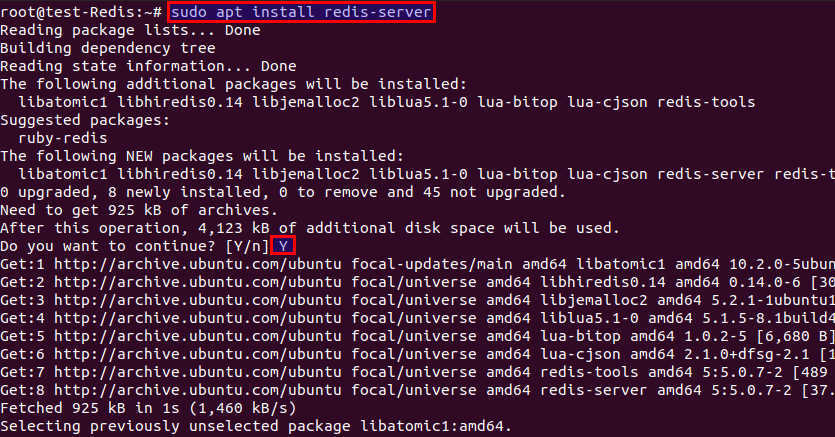
Getting Started with Linode guide and complete the steps for setting your Linode’s hostname and timezone. A value can contain either a simple data type such as a string, or a complex data structure such as a list, set, or hash. A key is used to retrieve a stored value. Redis is an example of a key-value store database. It can serve as a database cache and message broker and works well with web applications. Redis is an open-source in-memory data structure store.
#APT INSTALL REDIS CLI HOW TO#
You may add any of these options to your Redis server configuration in the config/database.This guide explains how to install and perform the basic configuration of
#APT INSTALL REDIS CLI PASSWORD#
In addition to the default host, port, database, and password server configuration options, phpredis supports the following additional connection parameters: name, persistent, prefix, read_timeout, retry_interval, timeout, and context. The client that Laravel will use to communicate with Redis is dictated by the value of the redis.client configuration option, which typically reflects the value of the REDIS_CLIENT environment variable: 'redis' => [

If you are using the Predis client and would like to enable this alias, you may un-comment the alias in your application's config/app.php configuration file.īy default, Laravel will use the phpredis extension to communicate with Redis. For convenience, an alias entry is included for each facade offered by Laravel however, the Redis alias is disabled because it conflicts with the Redis class name provided by the phpredis extension. Laravel's config/app.php configuration file contains an aliases array which defines all of the class aliases that will be registered by the framework. To utilize these additional configuration options, add them to your Redis server configuration in your application's config/database.php configuration file: 'default' => [ In addition to the default host, port, database, and password server configuration options, Predis supports additional connection parameters that may be defined for each of your Redis servers.

'client' => env('REDIS_CLIENT', 'predis'), If you would like your application to interact with Redis via the Predis package, you should ensure the REDIS_CLIENT environment variable's value is predis: 'redis' => [ 'cluster' => env('REDIS_CLUSTER', 'redis'), If you would like to use native Redis clustering instead of client-side sharding, you may specify this by setting the options.cluster configuration value to redis within your application's config/database.php configuration file: 'redis' => [ However, client-side sharding does not handle failover therefore, it is primarily suited for transient cached data that is available from another primary data store. 'host' => env('REDIS_HOST', 'localhost'),īy default, clusters will perform client-side sharding across your nodes, allowing you to pool nodes and create a large amount of available RAM. This configuration key does not exist by default so you will need to create it within your application's config/database.php configuration file: 'redis' => [

If your application is utilizing a cluster of Redis servers, you should define these clusters within a clusters key of your Redis configuration. 'url' => 'tls://user: :6380?database=1',īy default, Redis clients will use the tcp scheme when connecting to your Redis servers however, you may use TLS / SSL encryption by specifying a scheme configuration option in your Redis server's configuration array: 'redis' => [ 'password' => env('REDIS_PASSWORD', null),Įach Redis server defined in your configuration file is required to have a name, host, and a port unless you define a single URL to represent the Redis connection: 'redis' => [ 'client' => env('REDIS_CLIENT', 'phpredis'),

Within this file, you will see a redis array containing the Redis servers utilized by your application: 'redis' => [ You may configure your application's Redis settings via the config/database.php configuration file. Predis is a Redis client written entirely in PHP and does not require any additional extensions: composer require predis/predis If you are unable to install the phpredis extension, you may install the predis/predis package via Composer. If you are using Laravel Sail, this extension is already installed in your application's Docker container. The extension is more complex to install compared to "user-land" PHP packages but may yield better performance for applications that make heavy use of Redis. It is often referred to as a data structure server since keys can contain strings, hashes, lists, sets, and sorted sets.īefore using Redis with Laravel, we encourage you to install and use the phpredis PHP extension via PECL. Redis is an open source, advanced key-value store.


 0 kommentar(er)
0 kommentar(er)
